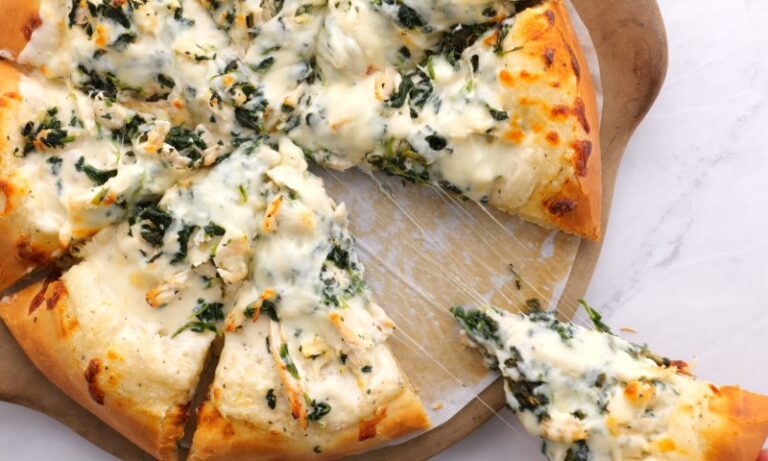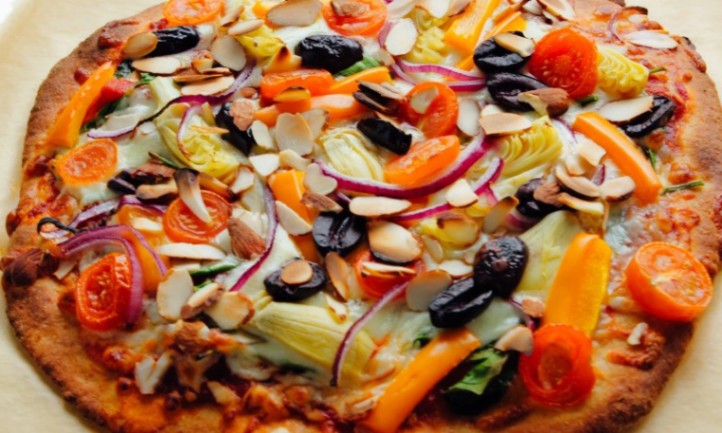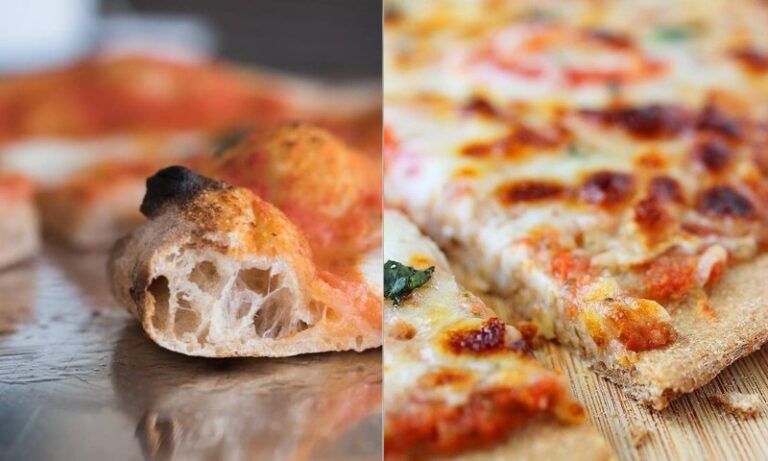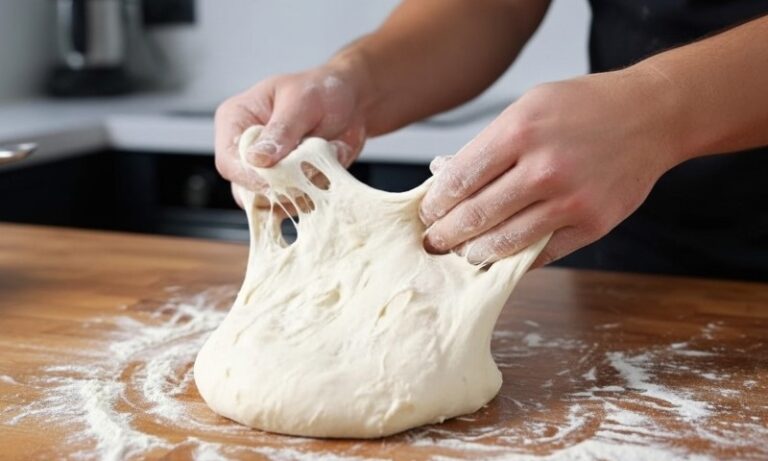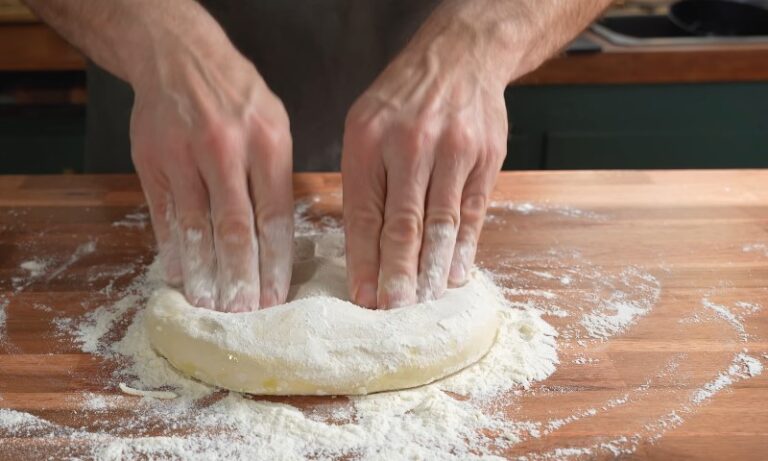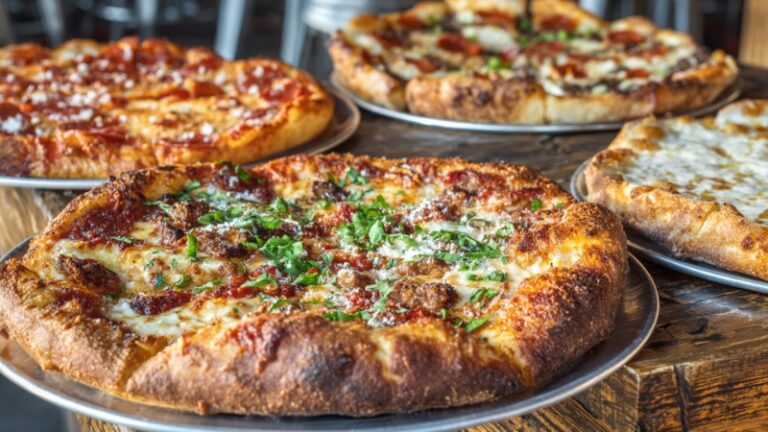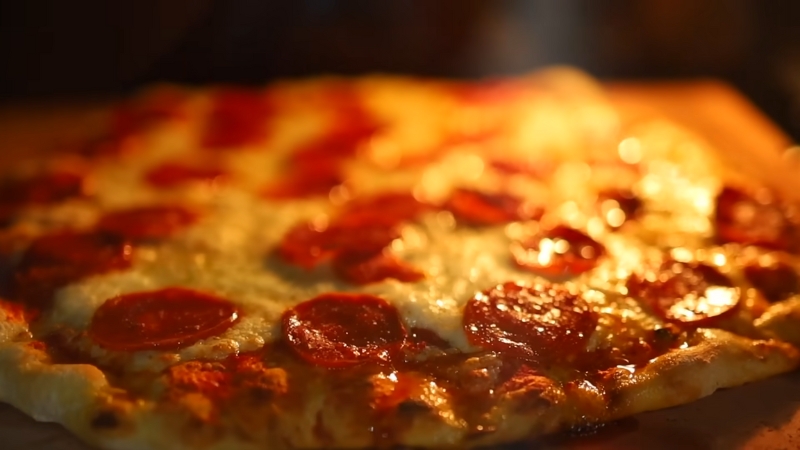If you’ve ever pulled a homemade pizza out of the oven only to be met with a soggy crust, pale cheese, or toppings that seem weirdly steamed instead of browned and bubbly… yeah, you’re not alone.
Getting homemade pizza right isn’t just about the dough recipe or which toppings you throw on top—it’s about heat. High heat.
But how hot is hot enough? And can your home oven get there?
For most home ovens, crank it as high as it’ll go, usually around 500°F (260°C). Want more nuance?
A sweet spot depends on your dough, crust style, and equipment. Let’s break it down in a way that’ll get your pizza game from “meh” to “holy wow.”
Table of Contents
ToggleWhy Temperature Matters (A Lot)
Pizza is one of those foods where heat makes or breaks the whole experience. At higher temperatures:
- The crust puffs quickly, trapping steam and creating airy bubbles.
- Sugars and proteins in the dough caramelize and brown (that’s the Maillard reaction doing its thing).
- Cheese melts evenly without turning rubbery.
- Toppings roast instead of sweating out moisture and going limp.
Try baking at 375°F and you’ll end up with a pizza that tastes more like a casserole on flatbread. Sure, it’s edible, but it’s not pizza pizza.
The Goldilocks Zone: How Hot Should You Bake Pizza?
Let’s not overcomplicate it. Here’s a breakdown based on pizza styles and equipment:
Pizza Style
Ideal Home Oven Temp
Bake Time
Notes
Neapolitan-inspired
500–550°F
5–7 mins
Needs a preheated stone/steel. Super quick bake.
New York-style
475–500°F
7–10 mins
Crust gets crispy but stays foldable.
Thin crust (cracker-style)
450–475°F
10–12 mins
Longer bake = drier, snappier crust.
Pan pizza (Detroit, Sicilian)
425–450°F
12–15 mins
Heavier dough and toppings. Lower temp helps bake through without burning.
Frozen pizza
400–450°F
12–16 mins
Follow the box… but slightly higher heat often helps.
If your oven goes higher than 550°F (some do), that’s even better for Neapolitan-style.
But honestly, most of us are working with standard home ovens that max out at 500°F, maybe 525°F with convection on.
What If Your Oven Tops Out at 450°F?
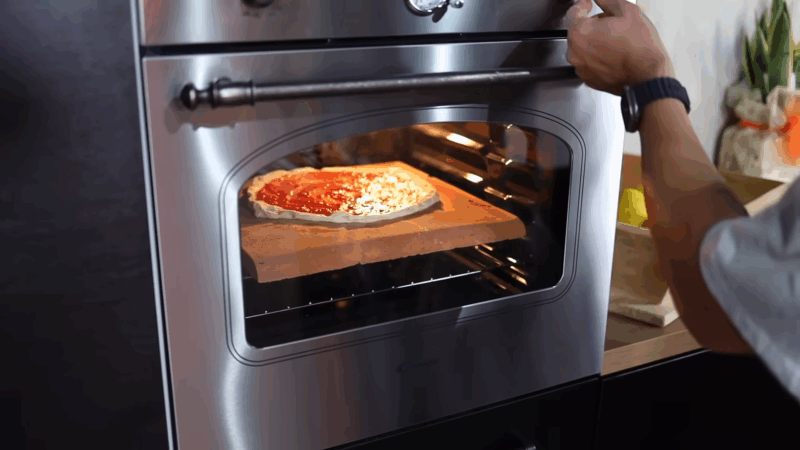
Don’t stress. You can still make a killer pizza. The key is optimizing other variables:
- Use a baking stone or steel: Preheat it for at least 45 minutes. It mimics the intense bottom heat of a pizza oven.
- Roll your dough thinner: Thinner crusts cook more evenly and faster at lower temps.
- Pre-cook heavier toppings: Mushrooms, onions, sausage—give them a quick sauté so they don’t water down your pie.
- Broil at the end: A 1–2 minute blast under the broiler gives you the golden cheese and blistered crust you’d get from higher heat.
Stones, Steels, and Sheet Pans: Gear Makes a Difference
The surface your pizza hits when it enters the oven plays a huge role in how it bakes, especially when you’re working with a home oven that’s doing its best to imitate a pizza joint’s blazing heat. Here’s a quick breakdown:
Gear Type
Material
Heat Retention & Transfer
Preheat Time
Crust Result
Best For
Pizza Stone
Ceramic/Cordierite
Absorbs & radiates heat evenly
45–60 mins
Evenly cooked, chewy-crisp
Classic round pizzas
Baking Steel
Solid Steel
Transfers heat very quickly
45 mins
Darker, crispier bottom
Thin crust, New York-style bread
Sheet Pan
Aluminum/Steel
Lower heat retention
5–10 mins
Longer bake, oil-crisped
Sicilian, Detroit, thick crust
Pizza Stones: Old-School but Solid
Stones are classic for a reason. Made from ceramic or cordierite, they’re great at mimicking a pizza oven floor.
They heat up slowly but stay hot, which helps bake your crust evenly from underneath. You do have to give them a long preheat, 45 minutes is the minimum, and an hour is better.
And they’re a little fragile; thermal shock can crack one if you toss a cold dough onto a blazing hot stone. Still, they deliver.
Baking Steels: The Power Move
If you’re looking for serious performance, baking steels are the upgrade. They conduct heat way faster than stones, think seared crusts with real crunch and color.
A steel can give you that dark, crisp base with less bake time, which is especially helpful for high-moisture doughs or pizzas loaded with toppings.
They’re heavy, pricier, and won’t crack if you sneeze near them. Bonus: they double as a griddle or bread-baking surface, so they’re not a one-trick pony.
Sheet Pans: The Underdog with Potential
Good old sheet pans don’t get enough credit. They’re not flashy, but they work, especially for pan-style pizzas where the dough’s resting in olive oil and gets that rich, fried edge.
They don’t retain heat like a stone or steel, so the bake takes a bit longer, and the bottom crust won’t be as crisp unless you preheat the pan itself.
But for Sicilian or Detroit-style? A well-oiled pan is exactly what you want.
Dough Reacts to Temperature Too
Dough isn’t just a vehicle for toppings. It’s a living thing (well, it was—yeast-wise). And it reacts directly to how hot your oven is.
- High-moisture doughs (like Neapolitan): These thrive in high heat. The water in the dough creates steam, which causes the crust to puff up fast.
- Lower hydration doughs (like thin crust): More stable at lower temps. They bake evenly without over-expanding.
So if you’re using a homemade dough recipe, check the hydration percentage. Something around 65-70% works beautifully at 500°F.
If you’re using a store-bought dough ball, let it come to room temp first—cold dough bakes unevenly and can stay gummy in the center.
Pro Tips
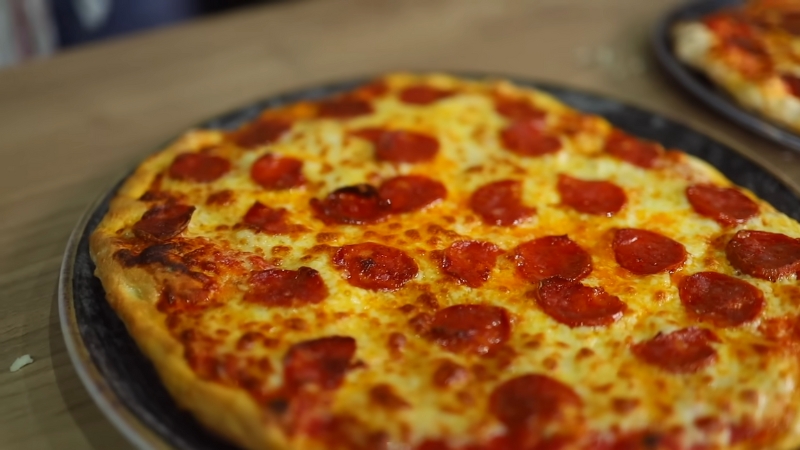
1. Preheat Everything
Your oven might say 500°F after 10 minutes, but that’s air temp, not the temperature of the oven walls or your stone/steel.
Give it 45–60 minutes for everything to fully saturate with heat.
2. Launching Matters
If you’re using a peel (wooden is best for launching), dust it with semolina or cornmeal.
It acts like little ball bearings, so your pizza slides off clean.
Don’t let the raw dough sit on the peel too long, it’ll start to stick.
No peel? Use parchment paper. Build the pizza on it and slide the whole thing onto your stone. After a couple of minutes, you can pull the paper out.
3. Watch the Bake, Not the Clock
Every oven is different. Your pizza might need 6 minutes or 11. Peek after 5, then keep an eye out for:
- Cheese is bubbling and starting to brown
- Crust puffing up and getting golden (maybe even a few charred spots)
- Underside golden-brown and crisp (use a spatula to lift and check)
4. Broil for The Win
Some home ovens can’t produce the top-down heat needed for a blistered crust. Flip on the broiler for the last minute or so, but watch closely.
It can go from “almost perfect” to “flame-broiled mistake” real fast.
What About Pizza Ovens?
@jenksbbq Homemade Pizza – Easy, Fast, and Better Than Takeout 🍕🔥 This is how I make homemade pizza the easy way—crispy crust, melty cheese, and done in minutes using my @Ooni Pizza Ovens and a killer local pizza kit from @Andolini’s Worldwide here in Jenks. What’s in the Andolini’s Pizza Kit ($25): • 3 legit pizza dough balls (the hard part is DONE) • House-made pizza sauce • Freshly grated mozzarella • Classic pepperoni Stretch the dough, add sauce, cheese, and toppings, then fire it in the Ooni at high heat. In just 3 minutes, you’ve got a fresh, homemade pizza that’ll impress your friends and family. 💥 If you’re not near Andolini’s, check with your local pizzeria—a lot of them sell dough or even full kits like this. It’s a game-changer. 💬 Comment “PIZZA” if you’re trying this—and share it with someone who needs to level up their pizza night! #HomemadePizza #Ooni #PizzaNight #EasyDinner #BackyardPizza #PizzaLovers #AndolinisPizza #PizzaRecipe #PizzaOven #WoodFiredPizza ♬ original sound – Jenks BBQ
Okay, let’s address the elephant in the backyard: pizza ovens.
Countertop and outdoor pizza ovens like the Ooni or Gozney can hit 900°F+. That’s restaurant-level heat, and it changes everything.
Pizzas cook in 60–90 seconds with gorgeous leopard spotting and a soft, chewy center.
If you’re into pizza and want to level up, they’re worth the investment. But they’re not essential.
You can make stunning pies with a regular oven, the right tools, and good technique.
Quick Troubleshooting
Problem
Likely Cause
Fix
Pale crust, dry toppings
The oven temp is too low
Bake hotter, use a stone/steel
Burnt bottom, raw top
Too much bottom heat, not enough top
Raise oven rack, finish under broiler
Soggy center
Dough too thick or wet, low heat
Roll thinner, preheat longer
The cheese browned too early
Cheese is too close to a broiler or oven top
Lower rack position
Dough sticking to the peel
Not enough flour/semolina, too much time on the peel
Use parchment or work faster
So, What’s the Best Temperature?
If we’re boiling it down to one number, 500°F is the sweet spot for most home ovens.
But temp is just one piece of the puzzle. The surface you bake on, the hydration in your dough, the toppings you use, and even how long you preheat all matter.
Experiment. Eat the slightly-too-dark ones. Celebrate the wins when you nail it. Homemade pizza isn’t supposed to be perfect, it’s supposed to be yours.
And once you lock in your setup? It’ll be hard to go back to delivery.
Related Posts:
- How Long Can Pizza Be Left at Room Temperature -…
- Cold Fermentation vs. Quick Dough - Which Makes the…
- Best Veggie Pizza Toppings For A Healthier Option
- The Best Low-Calorie Pizza Toppings for a Healthier…
- Domino’s Pizza Toppings List – Get the Best Combo!
- Best Chicken Crust Pizza Recipe of 2025 – Quick,…

